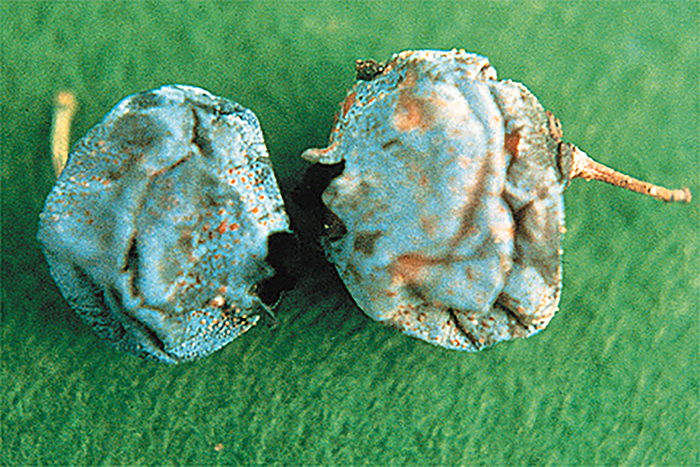West central Michigan small fruit update – July 25, 2024
Fresh blueberries of excellent quality and flavor are the main fruit crop available to local Michigan consumers.

Blueberry harvest continues in all of Michigan’s regions. Fruit harvested is of excellent quality and flavor and local consumers are flocking to local U-pick operations to harvest fresh blueberries. Although the weather has been variable with hot days with temperatures in the upper 80s and lower 90s, and with localized rains, harvest has continued throughout southern Michigan. Harvest has finished for many early season varieties like Duke, Bluetta and Brigita, but continues with Bonus, Bluecrop, Keepsake, Jersey and others. Because the unusual weather conditions that occurred at the beginning of the season, varieties like Elliott are already approaching harvest time, almost 20 days ahead of the normal harvest time. So far, labor for hand harvest has not been an issue for most large growers but remains a challenge for small operations.
Insects and fruit rot diseases are the main pest management concerns for blueberry growers. The mild winter conditions that occurred at the beginning of the year allowed spotted wing Drosophila (SWD) to start activity exceedingly early to build its populations. We have also seen Anthracnose fruit rot show up earlier favored by hot days and high relative humidity resulting from localized thunderstorms and rain showers.
Regarding SWD, Michigan State University Extension recommends continuing to monitor the presence of SWD in fields, especially in locations with a history of large SWD infestations, as well as monitoring the absence or presence of larvae in the fruit before and after any insecticide application. Remember to inspect and clean SWD traps each week and remove the flies captured (Photo 1) during the sampling period and replace the yellow sticky card inside of the trap to keep the trap functioning appropriately. In addition, assess the fruit for the presence of larvae before and after any insecticide application by dipping a fruit sample (0.5 to 1 pound) for 30 minutes in a salt solution. Then, using a sieve, strain the fruit and collect the liquid that may contain any insect larvae. This can also be used to detect blueberry maggot, another harvest-time insect pest.
Presently, the only available pest control for SWD is insecticide applications. Recommended insecticides are those with short preharvest intervals. Keep in mind that the best strategy for maintaining good control is to prevent the early establishment of resident SWD populations. Thus, fly monitoring is critical for timing the insecticide applications. Also, remember that Imidan is good for controlling adults and larvae inside the fruit, but a rain of more than 0.5 inch will wash off many insecticides requiring repeat application after rain to maintain control. Mustang Maxx is another effective insecticide with a short preharvest interval. However, hot temperatures above 85 degrees Fahrenheit will inactivate the insecticide rapidly, and bifenthrin containing products have better resistance to heat. Check the Michigan Fruit Management Guide (Bulletin E-154) for more information and other recommended insecticides.
For Anthracnose fruit rot, Michigan State University (MSU) Extension recommends using fungicides like Switch and avoiding Abound in places where resistance to this fungicide is already present. Again, check the Michigan Fruit Management Guide for more information and other recommended fungicides.

Finally, the blueberry fruit team is inviting all blueberry growers to our 2024 Blueberry Field Day on Sept. 4, 2024, at the MSU Trevor Nichols Research Center, 6237 124th Ave, Fennville, MI 49408. Registration begins at 9 a.m. The event begins at 10 a.m.
The field day agenda is as follows:
- Welcome and industry updates
- Blueberry irrigation demonstration
- Trichogramma egg parasitoids for fruitworm control
- Harvest management of Duke, Draper, and Calypso to improve fruit flavor
- Lunch
- 1 to 3 p.m. – Field demonstration stations
- Evaluating blueberry cultivars for gall wasp resistance
- Groundcover effects on blueberry quality
- Fruit rots and diagnostic services
- Irrigation project demonstration
- Nematode application against SWD demonstration
- Soil color, what does it mean?
Online registration is requested to estimate the number of attendees to order lunch and beverages.



 Print
Print Email
Email




